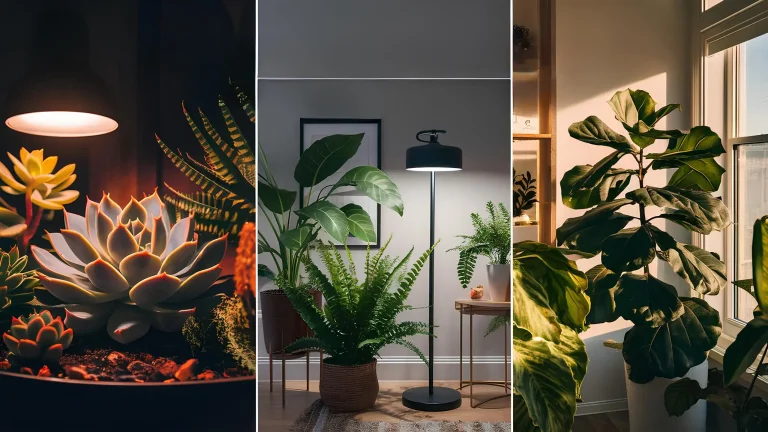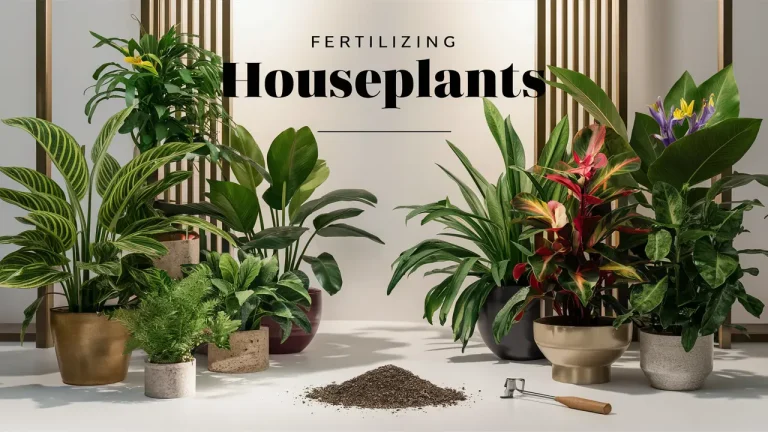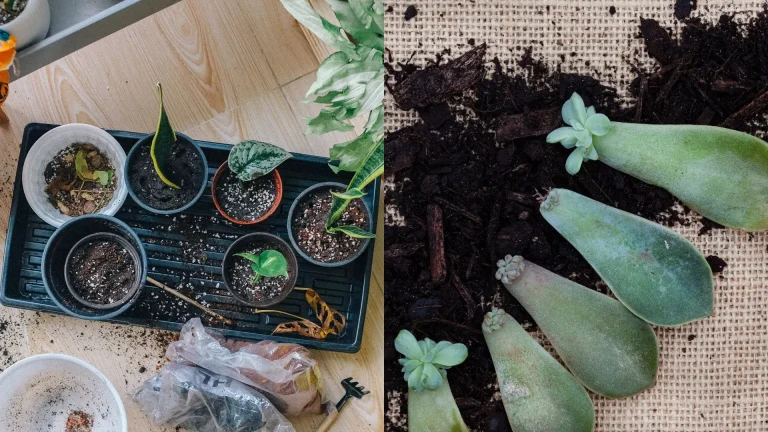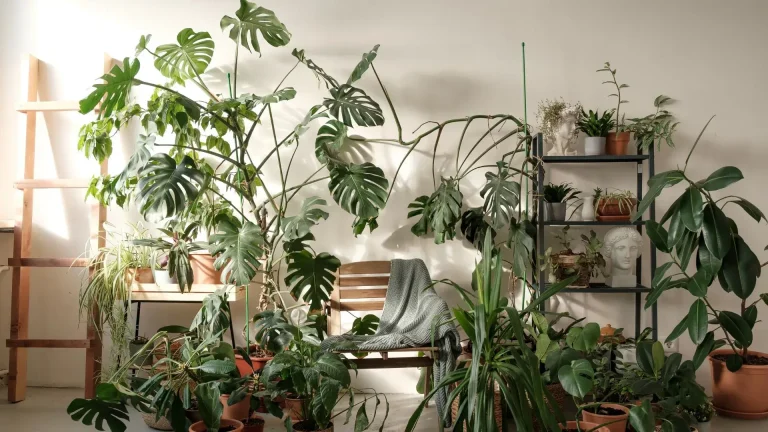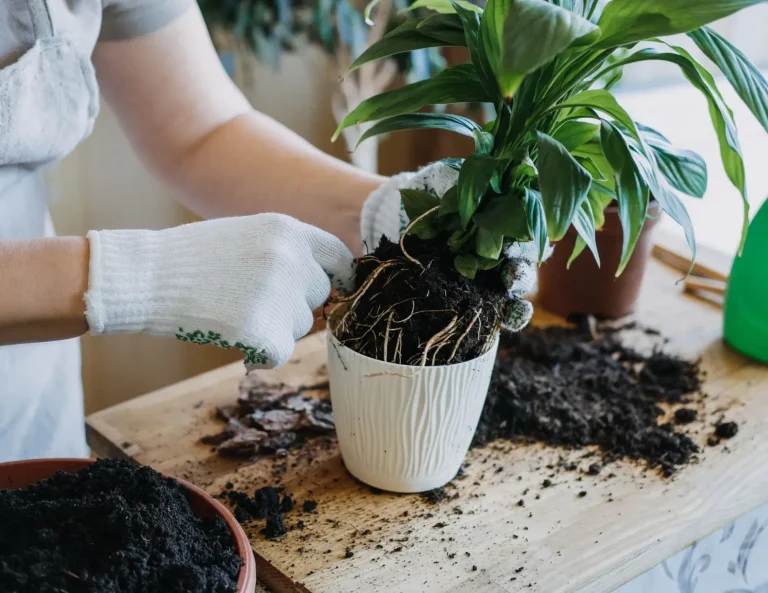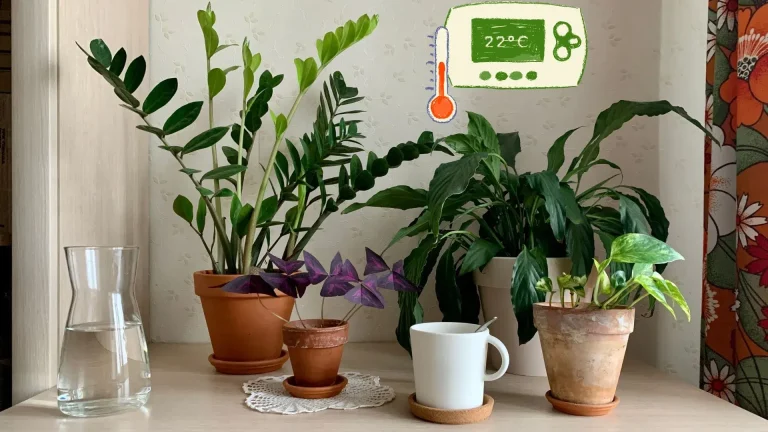Houseplant Potting Soil: Choosing the Perfect Mix for Your Plants
The foundation of any healthy houseplant lies in its soil—quite literally! While most plant parents focus on watering schedules and light conditions, the type of soil you use plays a crucial role in your plant’s long-term health and growth.
This article delves into the importance of soil in houseplant health, the differences between potting soil and potting mix, the key components of quality houseplant mixes, and how to match soil to the natural habitats of your plants.
Table of Contents
Importance of Soil in Houseplant Health
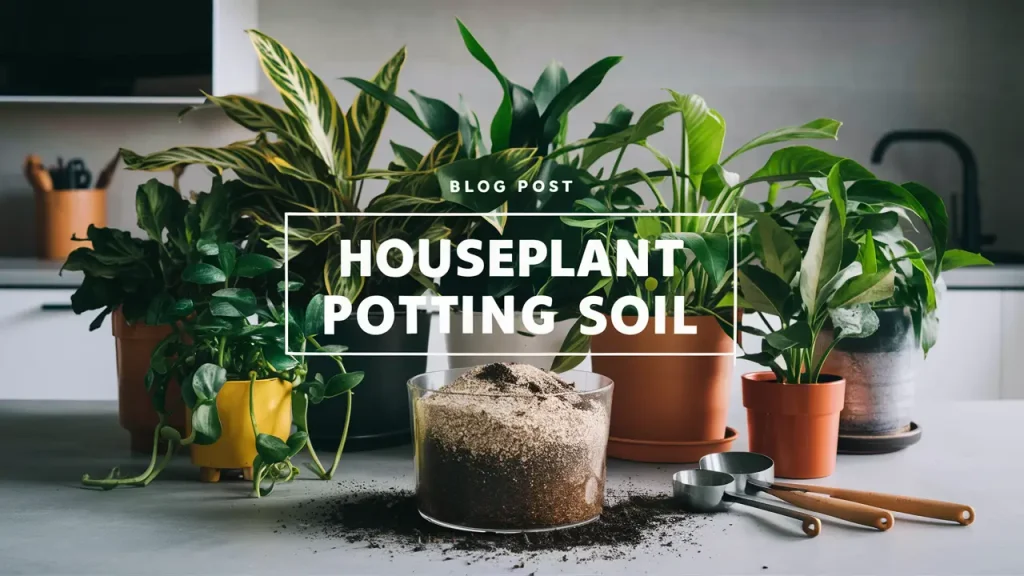
Soil isn’t just something to keep your plants anchored; it’s their lifeline. A good soil mix provides:
- Water Retention: Holds moisture near the roots for hydration.
- Drainage: Prevents excess water from causing root rot.
- Aeration: Allows oxygen to flow to the roots for proper breathing.
- Nutrient Storage: Supplies essential minerals and fertilizers as your plant grows.
Without the right soil, even the most carefully watered and perfectly lit plants will struggle. Think of soil as the “support team” for your plants—it provides everything they need to thrive below the surface.
Potting Soil vs. Potting Mix
When shopping for soil, you’ll likely encounter two terms: potting soil and potting mix. Although they sound similar, they’re quite different and serve distinct purposes.
👉 Potting Soil
Potting soil often contains actual dirt or garden soil. It’s heavier and denser, making it more suitable for outdoor gardening. However, this composition can lead to poor drainage and compacting issues for houseplants, especially in containers.
👉 Potting Mix
Potting mix is a soilless blend designed specifically for container plants. It’s light, fluffy, and often includes materials like peat moss, coco coir, perlite, and bark. These ingredients help improve drainage, aeration, and disease resistance.
Think of potting soil as the “old-school” option and potting mix as the modern upgrade tailored for indoor living.
Why Potting Mix Is Preferred for Indoor Plants
Indoor plants thrive in controlled environments, and potting mix provides exactly that. Its benefits include:
- Better Drainage: Reduces the risk of overwatering and root rot.
- Improved Aeration: Ensures roots have the oxygen they need to grow.
- Lightweight Composition: Makes it easier to handle and prevents compacting in pots.
- Disease Resistance: Soilless mixes are less likely to carry harmful pathogens or pests.
For most houseplants, potting mix is the gold standard—it’s designed to mimic the conditions plants evolved to thrive in, without the challenges of heavy, nutrient-rich garden soil.
When Potting Soil Might Be Useful
Though potting mix is ideal for indoor plants, there are some cases where potting soil can work:
- Outdoor Containers: For large, outdoor planters where weight and compaction aren’t as critical.
- Blending Custom Mixes: You can mix small amounts of potting soil with drainage materials like sand or perlite to create a heavier blend for specific plants, like mature trees or shrubs.
However, for most indoor plant enthusiasts, sticking to potting mix is simpler, cleaner, and far more effective.
Key Components of Quality Houseplant Mixes
Potting mixes are made from a variety of components. Each material serves a specific purpose, creating a balanced environment for your plants.
👉 Base Materials
These are the primary ingredients that form the bulk of the mix, providing structure and basic functionality.
- Peat Moss: Retains moisture and improves soil structure. However, it’s not the most sustainable option due to environmental concerns.
- Coco Coir: A renewable alternative to peat moss, made from coconut husks. It’s excellent at holding water while allowing air circulation.
- Composted Bark: Adds organic matter to the mix, improving aeration and providing some nutrient content.
👉 Drainage Enhancers
These materials improve soil porosity, allowing excess water to escape quickly and ensuring roots don’t sit in water.
- Perlite: A lightweight, volcanic rock that creates air pockets and boosts drainage. It’s a staple in most potting mixes.
- Pumice: Similar to perlite but heavier, making it a better option for larger pots or outdoor containers.
- Coarse Sand: Adds weight and helps water move through the soil quickly. Ideal for desert plants like succulents and cacti.
👉 Nutrient Sources
These ingredients supply essential minerals and nutrients that plants need to grow and thrive.
- Compost: A rich source of organic matter that slowly releases nutrients over time.
- Worm Castings: Packed with nutrients and beneficial microbes that boost soil health and plant growth.
- Slow-Release Fertilizers: Provide a steady supply of nutrients, minimizing the need for frequent fertilization.
By combining these materials, you can create a potting mix that meets your plants’ needs and mimics their natural environment. Whether you’re using a ready-made mix or crafting your own, understanding these components will help you make informed choices and give your houseplants the best possible start.
Matching Soil to Natural Habitats
In their natural habitats, plants grow in soil that meets their unique needs. Tropical plants are accustomed to rich, organic materials and consistent moisture, while desert plants thrive in sandy, quick-draining soil. By mimicking these conditions, you can:
- Improve root health.
- Promote robust growth.
- Reduce stress caused by improper watering or drainage.
When you consider a plant’s origins, you’re not just caring for it—you’re giving it a home it can flourish in.
Common Soil Mixes 🪴
Not every plant needs a completely custom soil blend. Many houseplants do well in standard mixes designed for specific growth needs. Below are some common mixes you can use as a starting point.
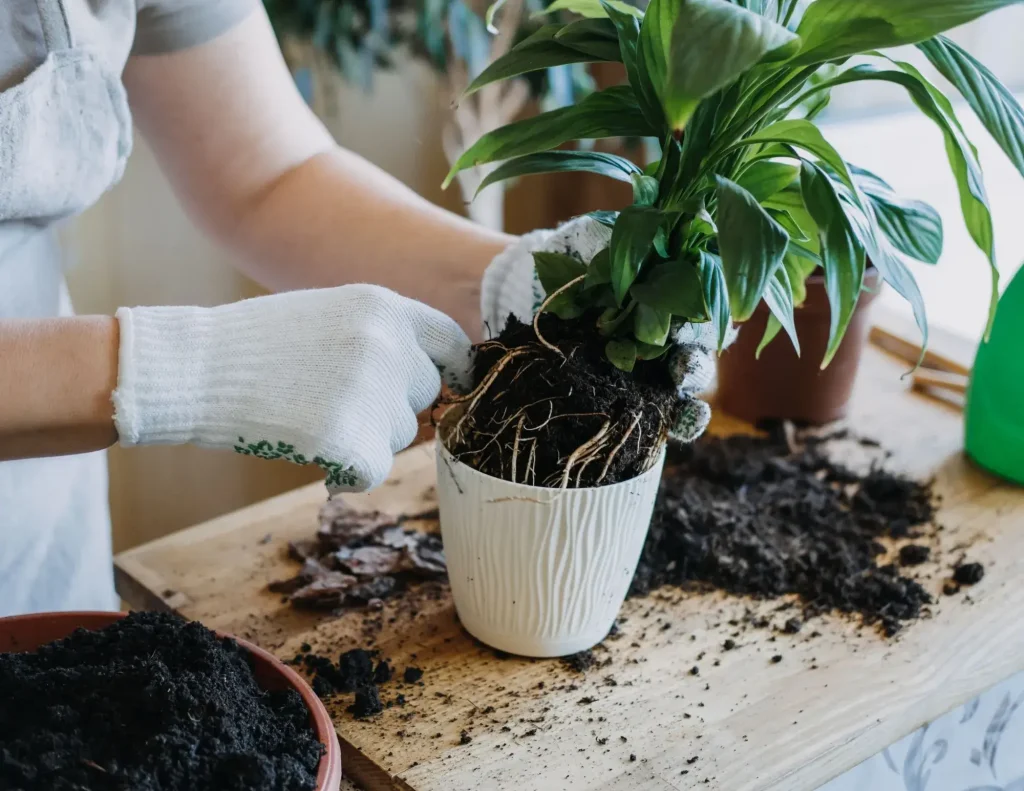
👉 All-Purpose Houseplant Mix
This versatile mix works well for most indoor plants, like pothos, peace lilies, and snake plants. It strikes a balance between water retention and drainage, making it suitable for a wide range of species.
Basic Recipe:
- 60% quality potting mix
- 20% perlite
- 10% orchid bark
- 10% worm castings (for a gentle nutrient boost)
👉 Tropical Plants
Plants like Monsteras, Philodendrons, and Pothos originate from humid rainforests where soil is:
- Rich in organic matter
- Moist but well-draining
- Light and airy to allow roots to breathe
Basic Recipe for Tropical Mix:
- 50% quality potting mix
- 25% orchid bark
- 15% perlite
- 10% activated charcoal (to prevent odors and improve drainage)
👉 Desert Plants
Cacti and succulents evolved in arid regions with rocky, fast-draining soil that prevents water retention. Their roots are adapted to absorb moisture quickly and then dry out.
Basic Recipe for Desert Plant Mix:
- 50% cactus potting mix
- 25% coarse sand
- 25% perlite or pumice
👉 Specialized Mixes
For Aroids (e.g., Monstera, Philodendron)
Aroids love chunky, airy mixes that mimic the loose, organic forest floor. These plants need excellent drainage combined with moisture retention.
Basic Recipe For Aroids:
- 40% regular potting mix
- 30% orchid bark
- 15% perlite
- 10% activated charcoal
- 5% sphagnum moss (for extra moisture retention)
For African Violets
African violets are finicky about their soil. They prefer a mix that is light, slightly acidic, and retains moisture without becoming soggy.
Basic Recipe For African Violets:
- 70% African violet mix (commercially available)
- 20% perlite
- 10% vermiculite (to improve water retention and aeration)
With these mixes, you’re armed with a variety of options to suit your plants’ specific needs.
Maintaining Healthy Soil
Even the best soil mix won’t last forever. Over time, the components of potting soil break down, compact, and lose their ability to provide the essential functions your plants rely on. Regular maintenance ensures that your soil stays fresh and supportive, helping your plants grow strong and healthy.
👉 How Soil Degrades Over Time
- Loss of Structure: Organic components like peat moss and coco coir decompose, causing the soil to compact and restrict airflow.
- Nutrient Depletion: Plants absorb nutrients over time, leaving the soil less fertile.
- Salt Buildup: Fertilizers and tap water can deposit salts in the soil, which may harm roots.
- Reduced Drainage: Compacted soil holds too much water, increasing the risk of root rot.
Without intervention, degraded soil can hinder root development and stunt your plant’s growth.
👉 Signs Your Soil Needs Attention
- Water Pooling: Water sits on the surface rather than soaking in, indicating compacted or hydrophobic soil.
- Compacted Soil: The soil feels hard or crusty, making it difficult for roots to breathe.
- Visible Roots: Roots grow out of drainage holes or the surface, signaling the plant is outgrowing its pot.
👉 Regular Maintenance Tips
Monthly Practices
- Check Moisture Levels: Use a moisture meter or finger test to ensure even watering.
- Remove Debris: Clear fallen leaves or plant material from the soil surface to prevent mold or pests.
- Aerate the Soil: Gently loosen the top layer of soil with a fork or chopstick to improve airflow.
- Monitor for Salt Buildup: Look for white crusts on the soil surface and flush the pot with water if needed.
Seasonal Practices
- Adjust Watering: Reduce watering in winter when plants are dormant and increase it in spring and summer.
- Fertilize During Growth Season: Add nutrients in spring and summer to replenish what plants use.
- Check Drainage: Ensure pots aren’t clogged and soil isn’t holding excess water.
- Refresh Soil: Repot or top up with fresh potting mix as needed, typically every 12–18 months.
Common Soil Problems and Solutions
Despite your best efforts, soil issues can arise. Here’s how to address some common problems:
👉 Compacted Soil
Cause: Organic matter breaking down or infrequent aeration.
Solutions:
- Mix in perlite, orchid bark, or pumice during repotting.
- Gently aerate the top layer of soil monthly.
- Repot with fresh soil if compaction is severe.
👉 Poor Drainage
Cause: Insufficient drainage materials or clogged pots.
Solutions:
- Add more perlite, coarse sand, or pumice to your mix.
- Ensure pots have adequate drainage holes.
- Avoid pots without drainage unless using a careful watering routine.
👉 Water-Repellent Soil
Cause: Dry soil becoming hydrophobic and resisting water absorption.
Solutions:
- Try bottom watering by soaking the pot in a tray of water for 20–30 minutes.
- Add a wetting agent, such as a small amount of dish soap, to your watering can.
- Replace the top layer of soil or repot entirely if the problem persists.
Common Misconceptions About Soil Care 🛑
- “Any soil will do.”
Not all soil is created equal. The dense garden soil you dig up from your backyard isn’t suited for most houseplants. It can compact easily, suffocating roots and leading to poor drainage.
- “Houseplants don’t need special soil.”
While some hardy plants might tolerate less-than-ideal soil, most indoor plants flourish when given a mix tailored to their needs.
- “More soil means better growth.”
Over-potting—using a pot much larger than the plant’s root ball—can lead to waterlogged soil and root rot. Always match the soil amount to the size of your plant and container.
Final Thoughts ✍️
- Repot Annually: Most plants benefit from a soil refresh every 1–2 years.
- Size Matters: Choose a pot slightly larger than the root ball to avoid over-potting.
- Customize Your Mix: Adjust the components of your potting mix based on your plant’s needs and your observations.
Caring for houseplants is as much an art as it is a science, and soil is no exception. Don’t be afraid to try different soil mixes and observe how your plants respond. Each species has unique needs, and experimenting helps you learn what works best.
While soil quality is important, most houseplants are forgiving and can adapt to a range of conditions. If something doesn’t work, you can always adjust!
Confidence-Building Tips for Beginners
- Start with a general-purpose mix if customizing feels overwhelming.
- Watch for signs from your plants—they’ll tell you what they need.
- Celebrate small victories, like new growth, as proof of your growing skills.
With a clear understanding of these soil options, you’re now equipped to make the best choice for your plant family. Remember: healthy roots start with the right foundation!
Healthy soil, healthy plants! 🌱

